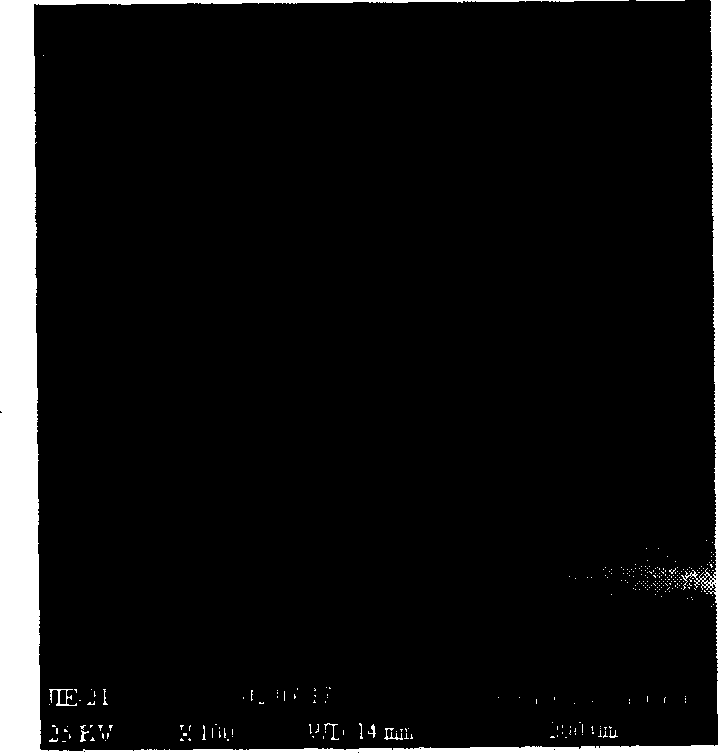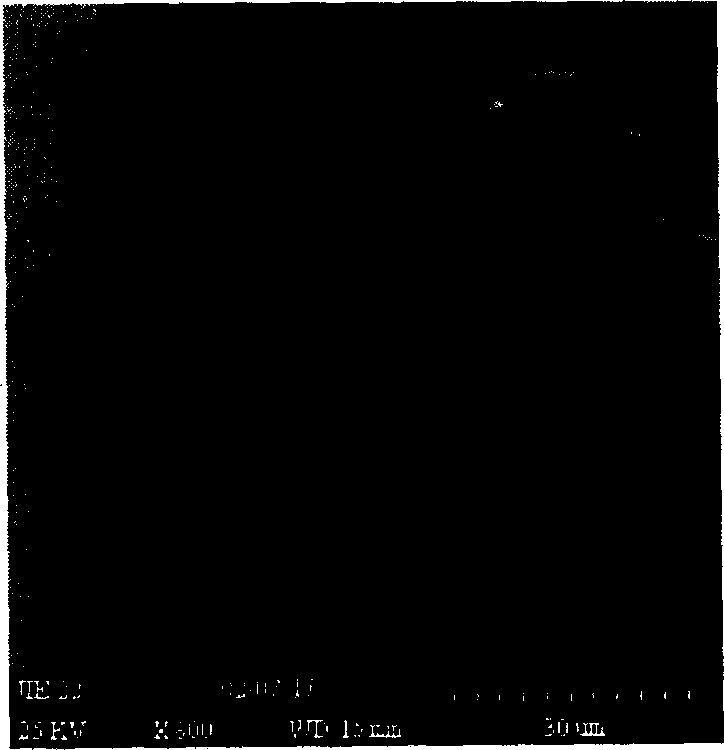Gas separation film made of cellulosic hollow fiber and the preparation process thereof
A gas separation membrane and cellulose technology, applied in separation methods, semi-permeable membrane separation, dispersed particle separation, etc., can solve the problems of acid and alkali resistance, organic solvent resistance decline, CS2 cannot be recycled, and limit application fields, etc., to achieve Good acid and alkali resistance, protection of natural characteristics and biocompatibility, simple film making process
- Summary
- Abstract
- Description
- Claims
- Application Information
AI Technical Summary
Problems solved by technology
Method used
Image
Examples
Embodiment 1
[0030] 10 grams of cellulose (average degree of polymerization ≈ 1000), 0.05 g of propyl ester (0.5% of the weight of the cellulose) was added to 90 grams of MMNO·H 2 In O, stir at 80°C for 24hr under the protection of nitrogen to dissolve completely. After vacuum defoaming, a casting solution with a cellulose concentration of 10wt.% is obtained, and then put into a spinning tank for wet spinning. The spinning temperature is 80°C, the core fluid is deionized water, the flow rate is 0.4ml / min, the gel bath is water, and the temperature of the water bath is room temperature. The spun cellulose hollow fiber membranes were washed in flowing deionized water for 24 hours and then dried in air. Scanning electron microscopy showed that the film was homogeneous and dense (such as figure 1 ). The inner / outer diameter of the hollow fiber membrane is 0.42mm / 0.72mm, and the thickness of the dense layer is 0.15mm.
[0031] The gas permeation rate of the prepared dense cellulose hollow me...
Embodiment 2
[0043] 18 grams of cellulose (average degree of polymerization ≈ 2000), 5 grams of MgSO 4 (5% of casting solution weight) add 82 grams of MMNO H 2 In O, stir at 110°C for 24hr under the protection of nitrogen to dissolve completely. After vacuum defoaming, a casting solution with a cellulose concentration of 18wt.% is obtained, and then put into a spinning tank for dry-wet spinning. The spinning temperature is 110°C, the dry spinning distance is 450mm, the core liquid is a mixture of deionized water / methanol / acetone (80 / 10 / 10wt.%), the flow rate of the core liquid is 0.4ml / min, the gel bath is water, and the temperature of the water bath is 60 ℃. The spun cellulose hollow fiber membranes were washed in flowing deionized water for 24 hours and then air-dried. The gas permeation rate of the cellulose hollow membrane was measured. CO 2 The penetration rate reaches 42×10 -8 cm 3 (STP) / (cm 2 *s*cmHg), separation coefficient α(CO 2 / N 2 ) is 50.
PUM
| Property | Measurement | Unit |
|---|---|---|
| thickness | aaaaa | aaaaa |
| thickness | aaaaa | aaaaa |
| degree of polymerization | aaaaa | aaaaa |
Abstract
Description
Claims
Application Information
 Login to View More
Login to View More - R&D
- Intellectual Property
- Life Sciences
- Materials
- Tech Scout
- Unparalleled Data Quality
- Higher Quality Content
- 60% Fewer Hallucinations
Browse by: Latest US Patents, China's latest patents, Technical Efficacy Thesaurus, Application Domain, Technology Topic, Popular Technical Reports.
© 2025 PatSnap. All rights reserved.Legal|Privacy policy|Modern Slavery Act Transparency Statement|Sitemap|About US| Contact US: help@patsnap.com



